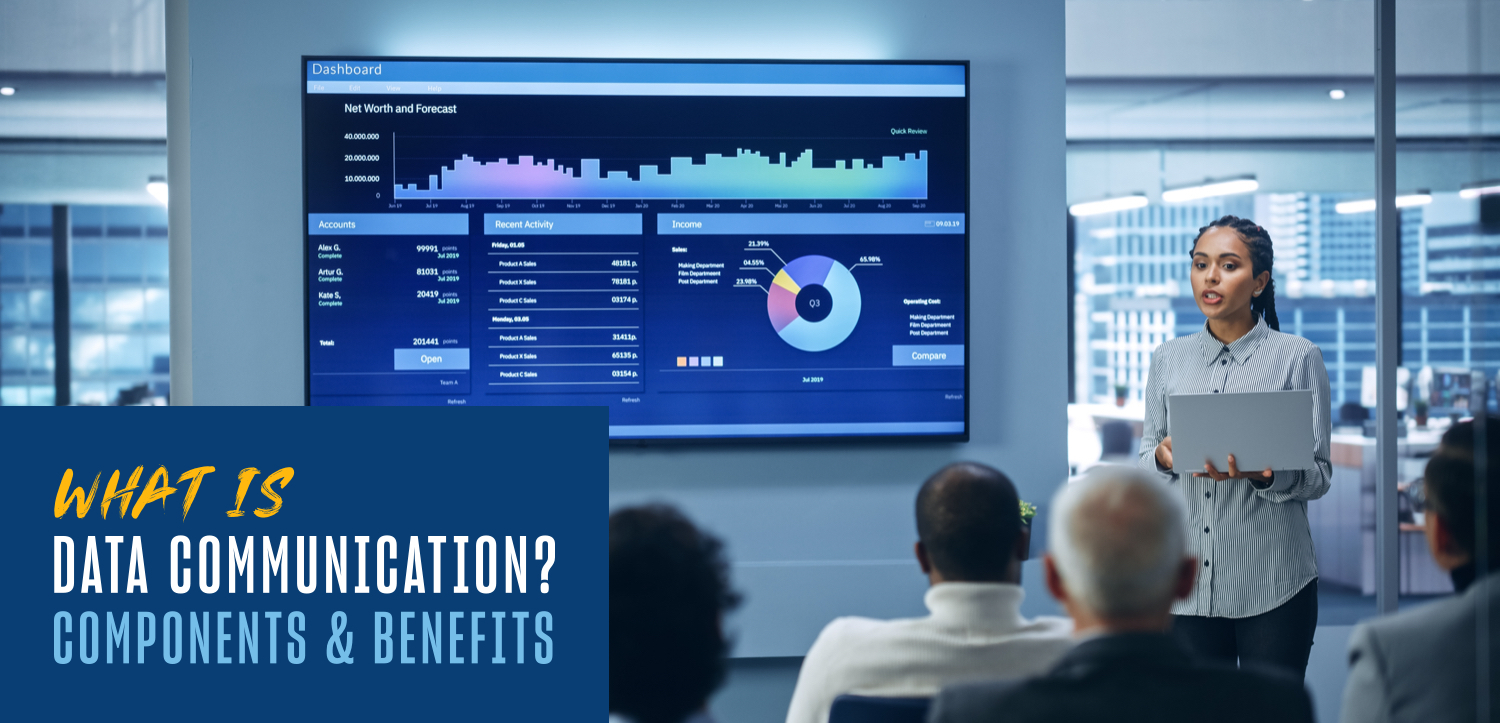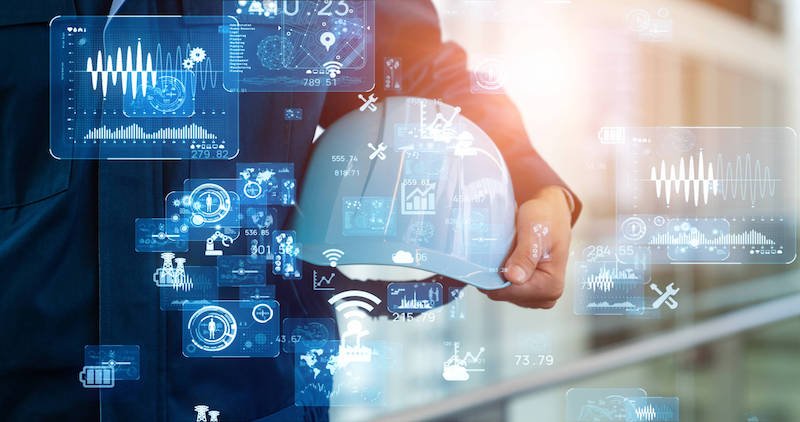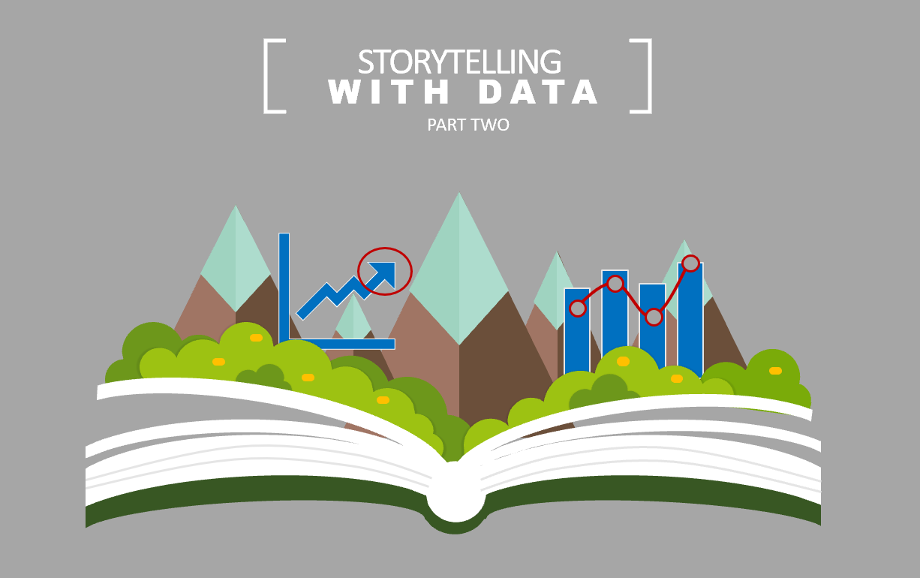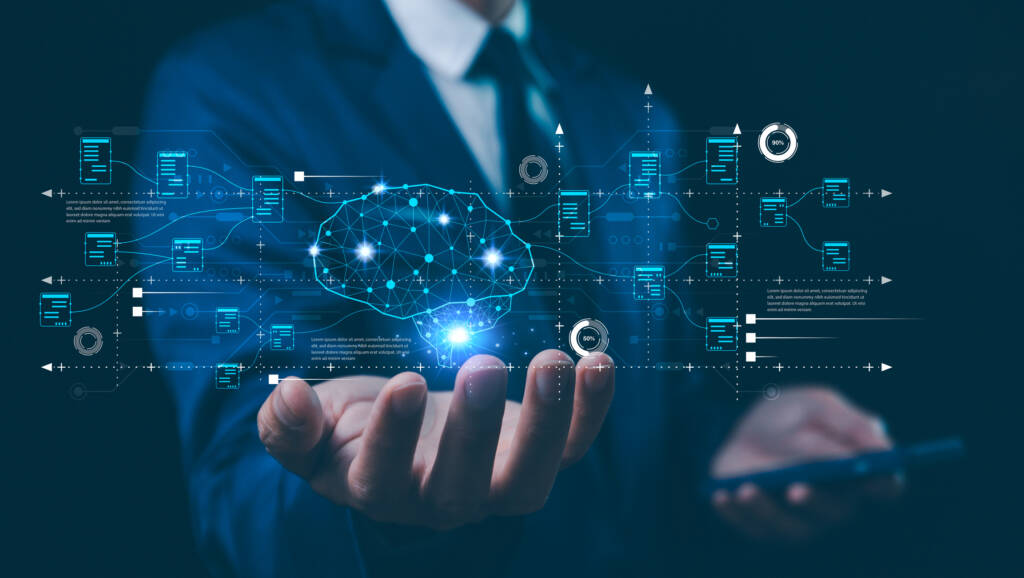Our modern, connected world hinges on data communication. It’s the fundamental basis that allows our devices to interact, providing us with instant and convenient access to information like never before.
However, the innovations we’ve seen in the last 50 years since the development of the first wireless networks and the creation of the internet are just the tip of the iceberg. The possible technologies we could witness within the next few years are fertile ground for those looking to create new business models, which is a major driving factor of why the University of San Diego developed the Master of Science in Applied Data Science program.
Before diving into detail about what may be on the horizon, it’s important to take a step back to understand the basic models of data communication and its general benefits. These insights will provide some helpful context on where we might be headed and might inspire you to develop the next great innovation in data communication.
What Is Data Communication?
Data communication is functionally similar to what we think of as “regular” communication, which is simply a sender transmitting a message to a destination. Data communication specifically refers to the process of using computing and communication technologies to transfer data (the message) from a sender to a receiver — or even back and forth between participating parties. The concept encompasses technologies like telecommunications, computer networking and radio/satellite communication.
Modern data networks all provide the same basic functions of transferring data from sender to receiver, but each network can use different network hardware and software to achieve these ends. Communication between devices adheres to industrial communications protocols, which is the set of rules that define how data is exchanged. Today’s data communications protocols are defined and are managed by interconnected bodies, including private businesses, standards-making organizations, regulatory agencies and common carriers.
4 Benefits of Data Communication
Before we can get into the benefits of data communication, it’s important to separate the concept of connectivity from communications. Connectivity is the capability of connecting one party to another. The benefits that arise from those connections depend on who’s connecting to whom — or to what.
We can think of it along three types of connections:
- Person to Person — such as when you call someone on a cell phone or have a chat session.
- Person to Machine — whenever you access information from a computer or automated system.
- Machine to Machine — when devices transfer information directly between each other.
Rather than being confined to these simple interactions, you can think of connectivity as a continuum. For example, when you text with someone else, the following steps occur:
- A person connects to a machine to send a message.
- The machine connects to another machine to deliver the message.
- The second machine translates and displays the message to another person.
- That person responds, and the process repeats, enabling a person-to-person connection.
The one thing that remains true in all of these connections is that some kind of information is transmitted, whether it’s retrieving a report from an archive, uploading data to a cloud server or holding a meeting in a Zoom call. Here’s a video that talks about the basics of connectivity in a little more detail.
Now, when we talk about data communications and networking, what we’re usually talking about are specific platforms. A data communications platform is essentially any technology that — whether it’s a cellphone, a laptop or the internet itself — enables connectivity. Today, data communication has become as ubiquitous as electricity itself, which has brought some incredible advances:
Instant communications. All of our modern digital communications, from email and instant messaging to video calls and TikTok, are all built on data communication networks. You can instantly connect with anyone in the world — or broadcast a message to thousands of people.
Greater business efficiency. Data communications has revolutionized how businesses interact with data. More effective ways of collecting and processing data leads to greater insights, which allow businesses to streamline productions, reduce expenses and improve operational efficiencies.
Innovations in automation. The Internet of Things (IoT) enables even more connection between different devices, allowing for new types of automation. For example, when we think of self-driving cars, providing them the ability to directly connect with other cars on the road over a 5G network makes the concept much more workable than trying to rely entirely on cameras and other sensors to determine positioning.
Smart monitoring systems. Sensors in wearable devices allow for advanced human health monitoring, which can transmit real-time data on someone’s condition or send alerts in an emergency. Wider applications include the development of smart cities that can offer improved traffic conditions, waste management, energy consumption and more.
Components of Data Communication
There are several components of data communication, but to keep things relatively brief, we should look at three of the most important elements: communication functionality, network models and standards of communication.
Communication Functionality
We’ve talked about the nature of communication being between a sender and a receiver. As data platforms have advanced, there has been increased functionality in how senders and receivers communicate:
- Simplex communications, which were the first and simplest means of communication where the transmission of data goes only in one direction. Simplex is still used in one-way data communication mediums such as radio stations and TV broadcasts.
- Half-duplex communication, where information can go both ways, but not at the same time. An example would be a CB radio, where a receiver has to wait for the system to be clear before responding.
- Full-duplex data communications models accommodate simultaneous two-way communication of data. The landline telephone is the most widely known means of full-duplex communication.
- Serial data communications is what we think of when we talk about networking. Data is packaged into units and then sent serially to the receiver by the sender. Once it is received, the units are reassembled to recreate the original data.
Network Models
Serial data communications rely upon networks to transmit data. The two most important network models are the Open Systems Interconnection Reference (OSI) model and the Internet model:
- The Open Systems Interconnection Reference model was developed by the Open System Interconnection Subcommittee in 1984. The OSI model consists of seven layers: the physical layer, data link layer, network layer, transport layer, session layer, presentation layer and application layer. Though it isn’t widely used today, it still has value as a foundational understanding of networking.
- The Internet model, though actually older than OSI, is the network model that has arisen to be the dominant model for all current hardware and software. Also referred to as the Transfer Control Protocol/Internet Protocol (TCP/IP) model, it combines the top three OSI layers into a single layer, making it a five-layer model consisting of a physical layer, data link layer, network layer, transport layer and application layer. The Internet model allows different independent networks to connect to one another and together, creating what we know as the global internet.
Standards of Communication
Standards define a set of rules known as protocols, which ensure that the software used in the different layers of the network models are compatible. Without standards, it would be virtually impossible for computers to communicate with each other. With standards, all hardware and software can communicate if they conform to the same specifications.
Previously, standards of communications were set by telecommunications standards bodies specific to different countries. Today, the Third Generation Partner Project (3GPP) initiative unites seven telecommunications standard development organizations — Japan’s Association of Radio Industries and Businesses (ARIB) and Telecommunication Technology Committee (TTC), Alliance for Telecommunications Industry Solutions (ATIS), China Communications Standards Association (CCSA), European Telecommunications Standards Institute (ETSI), Telecommunications Standards Development Society, India (TSDSI) and Korea’s Telecommunications Technology Association (TTA) — to establish a converging set of standards to maintain the global communications network.
All of these fundamentals essentially underpin what is covered in USD’s Master of Applied Data Science program’s foundational coursework, providing a comprehensive introduction to data science principles, including network models and communication standards critical to global data systems. The program covers predictive modeling, machine learning, data engineering and the use of cloud computing, equipping students with the necessary skills to develop advanced data-driven solutions.
Data Science Data Communication & Storytelling
While the term “data communication” often pertains to the transmission of data across technical networks utilizing various models and standards, within the field of data science it assumes a distinctly different role. Here, data communication — or more aptly, data science communication and storytelling — is central to the effectiveness and impact of data science.
Data Science Communication Defined
Data science communication involves the articulate and strategic relay of complex data insights to varied audiences, ensuring that these insights are both understood and actionable. This form of communication is crucial as it transcends the mere presentation of data, elevating it to strategic storytelling that engages stakeholders and drives business decisions.
Karen Church, Vice President of Research, Analytics and Data Science at Intercom, underscores the importance of this skill set: “I believe that communication is one of the most critical skills in data science…the ability to communicate effectively is just as important, if not more so, to driving real impact in data science.” Through effective data science communication, methodologies are impactfully applied across different platforms and environments.
Key Aspects of Effective Data Science Communication
Understanding and Translating Business Requirements
Data scientists must adeptly convert high-level business objectives into specific, data-driven tasks. Church notes, “Communication helps you understand and translate business requirements into specific data problems and research questions.” This alignment is vital for ensuring that data science projects fulfill organizational goals.
Framing or Reframing Problems
Accurately defining the data science problem is crucial as it ensures that the analysis addresses the right questions. Church explains the importance of problem framing: “Framing a problem in a way that a whole group or team can get a shared understanding of it, rally around it and take action on it [is essential].” Effective communication aids in clarifying the scope and nature of problems, thereby optimizing the focus and resources of data science initiatives.
Collaborating and Influencing
Data science frequently necessitates collaboration across various technical and non-technical stakeholders. Church asserts, “Communication plays a vital role in facilitating effective collaboration and helps influence and persuade others to take action or drive to a decision.” This collaborative process is imperative for seamlessly integrating data science into business strategies.
Presenting Results and Insights Effectively
The ability to communicate findings clearly and compellingly is critical. Data storytelling, which integrates data, visuals and narratives, is a pivotal technique highlighted by Church for making data insights accessible and impactful to stakeholders.
By distinguishing data science communication from traditional data communication, professionals are equipped to analyze, interpret and integrate these insights into the operational fabric of organizations. This specialized form of communication is integral to the creation of robust, data-driven solutions that significantly influence business outcomes and strategic decisions.
[Free On-Demand Webinar] Want to master data visualization? Download our guide to find the master’s program that enhances your skills.
Future of Data Communication
Today’s revolutionary data communication capabilities are why the modern era is defined as “the information age.” While recent advances make it challenging to predict the exact trajectory of data communications and networking, here are some trends and developments that are likely to shape the near future:
New Applications of Data Communication Networks
The improving capabilities of wired and wireless communication networks, including 5G and IoT (Internet of Things), are enabling new applications such as self-driving vehicles, mixed and augmented reality and remote communication advancements that facilitate complex tasks like remote surgery. Beyond these high-end applications, the acceleration of network speeds continues to solidify cloud computing as a baseline technology for corporate computing networks. Widespread cloud adoption is expected to enhance computational efficiency across all industries.
Investment in Green Technologies
Digital platforms enable greater operational efficiency and reduced reliance on physical resources, but they must be developed sustainably. For instance, smart electricity grids are essential for the electrification of transportation, including the next generation of electric vehicles. This push towards greener and more efficient computing power will likely necessitate the creation of adaptive logical private networks, enhanced two-way data communication networks and the use of AI to optimize resource distribution.
Geopolitical Dynamics and Technological Restrictions
Although the last decade has seen enhanced international cooperation and the establishment of global standards, geopolitical tensions could lead to new restrictions or bans on certain technologies. Examples include the US and EU’s prohibitions on Huawei’s network equipment and discussions around a potential TikTok ban in the US.
Integration of Communication Networks with Cloud Computing
For businesses pursuing digital transformation, merging telecommunication networks with cloud services represents a leap forward. Software will automatically configure these combined networks to tackle business challenges with remarkable precision. Future advancements could feature ultra-wideband, low-latency networks for real-time uses like controlling drone fleets, powering augmented reality displays and enabling interactions within the metaverse. Additionally, we may see a significant expansion in Internet addresses to enhance IoT connectivity in remote areas and the creation of nanonetworks for detailed, local monitoring and data collection.
The true transformative impacts of technologies such as 5G are more substantial than just faster cell phones and enhanced service, which telecom companies roll out swiftly for quick profits. For instance, a merger between telecommunications and data networks, which would make telecom networks programmable, could enable mobile phones to access wireless networks anywhere there is a phone signal. With the full deployment of 5G — and looking toward 6G — we can expect an integration of wired, wireless and satellite communications into a comprehensive network that facilitates entirely new applications.
As we keep pushing the limits of data communication, we must understand what drives these advancements. If you are interested in advancing your career in the world of data, consider how USD’s 100% online MS in Applied Data Science program can help prepare you for success.
Choosing the right educational path is essential to succeed in data science and prepare for future challenges. Download our eBook, 7 Questions to Ask Before Selecting an Applied Data Science Master’s Degree Program, to learn how to select an option that will keep you at the forefront of data science.




